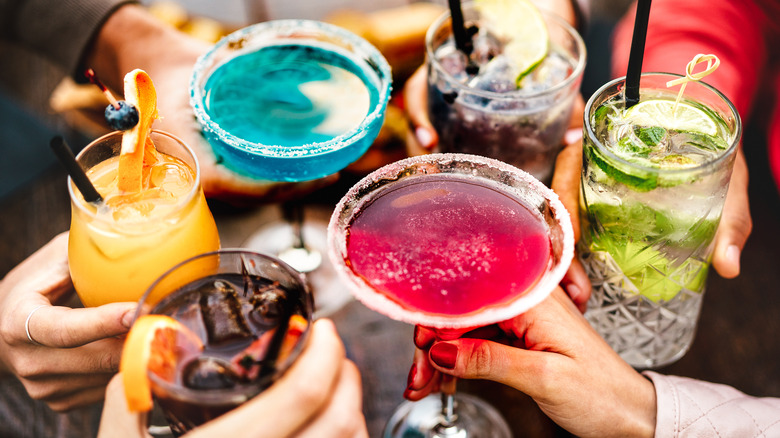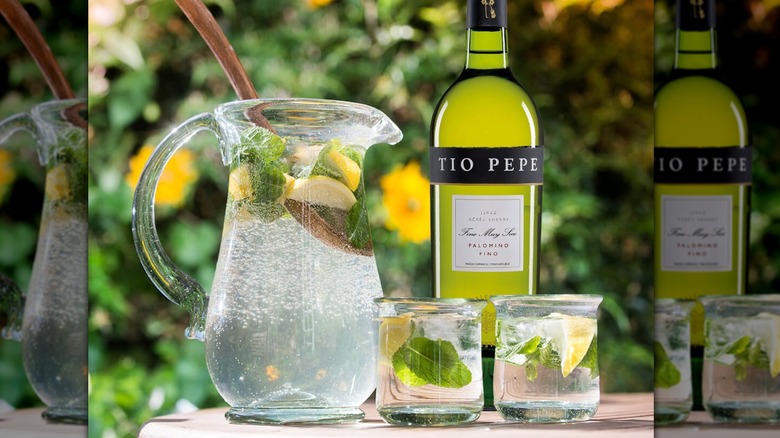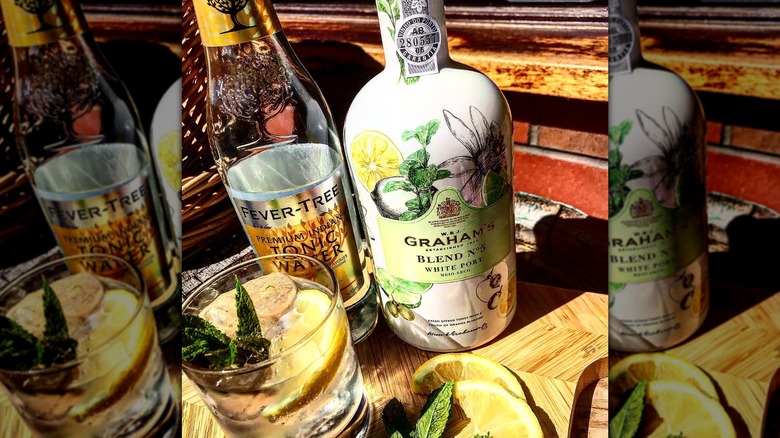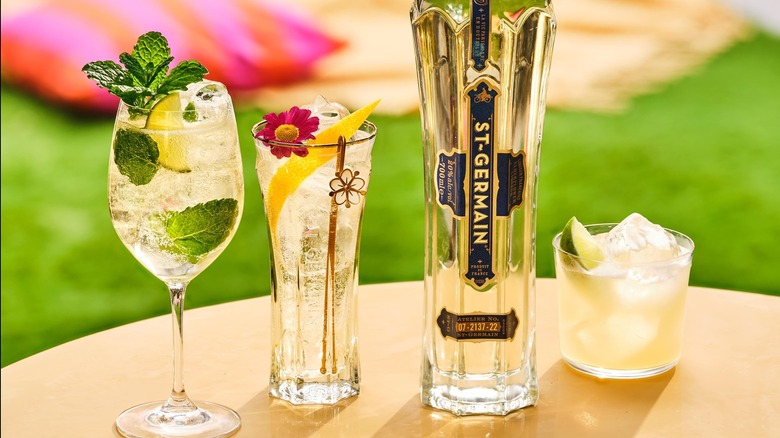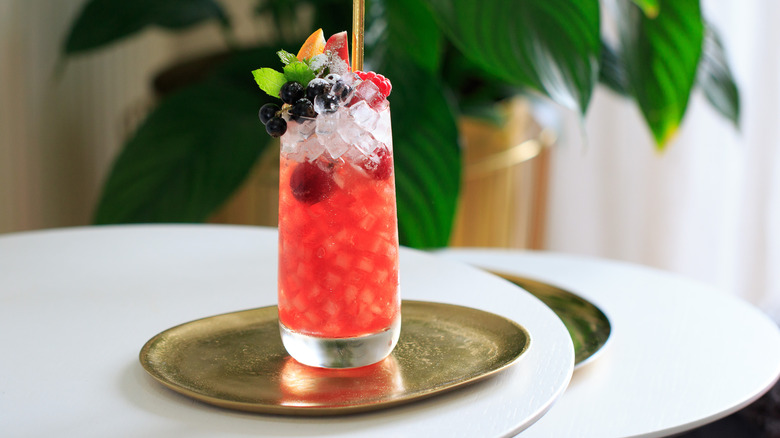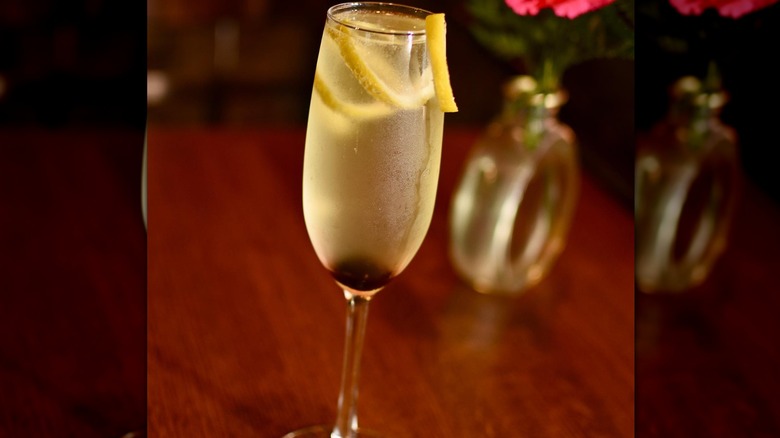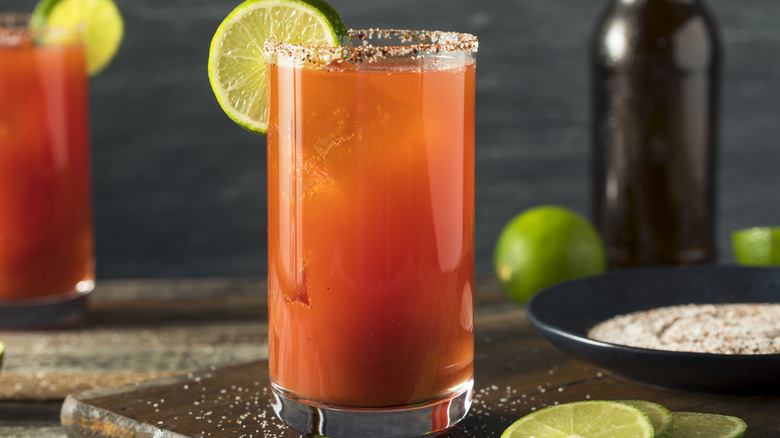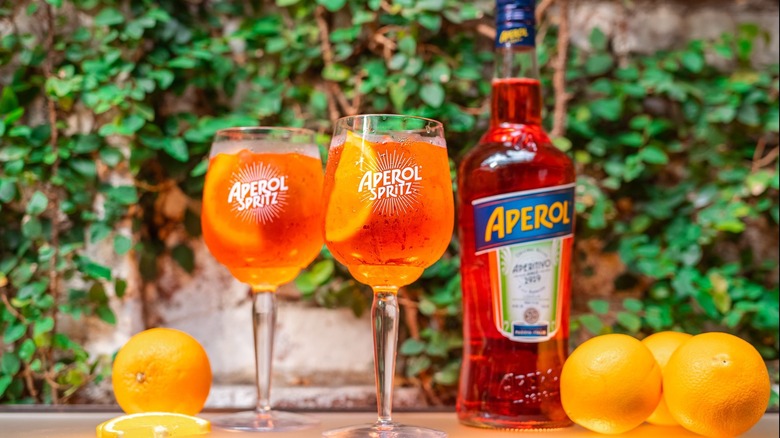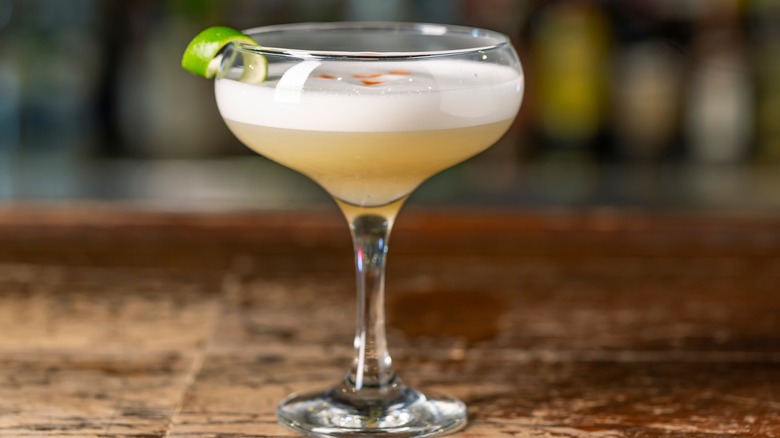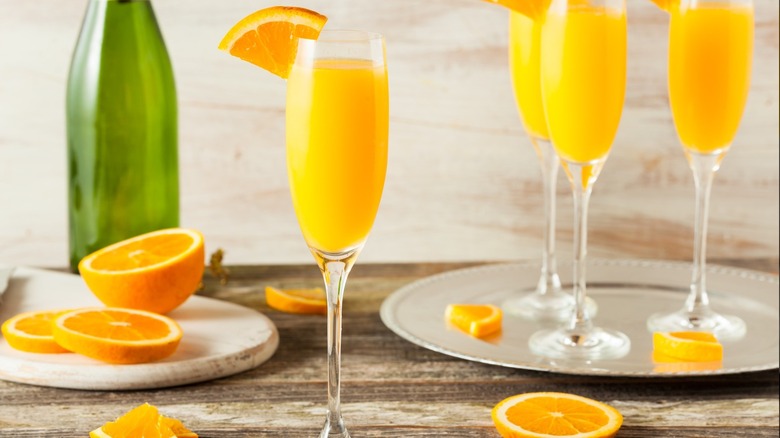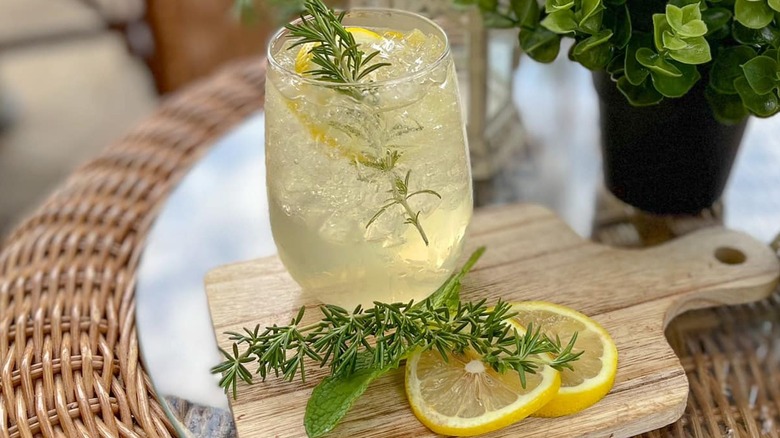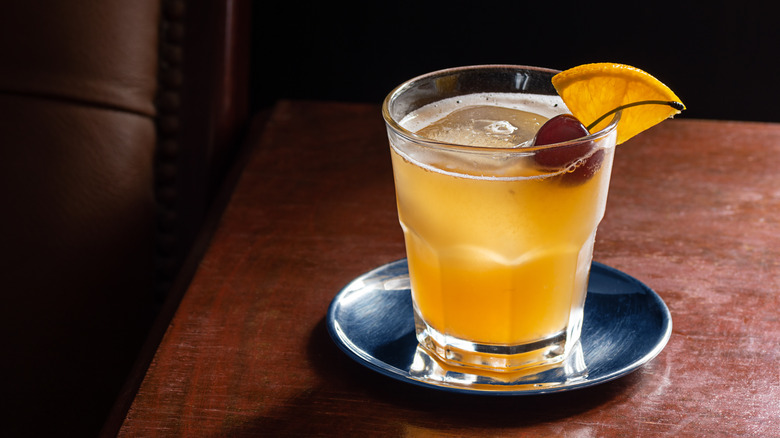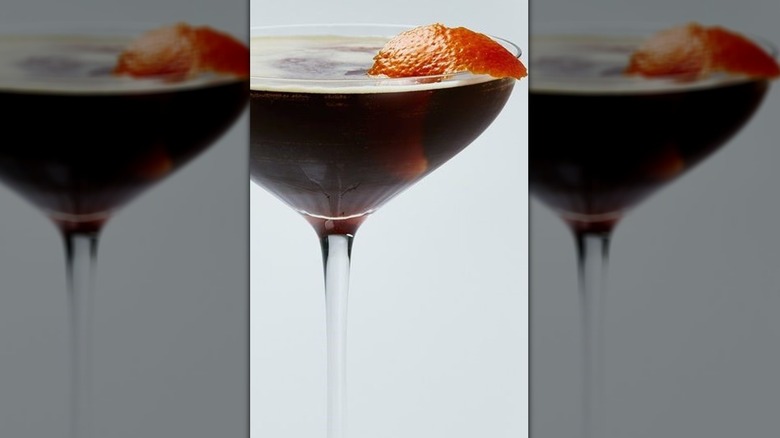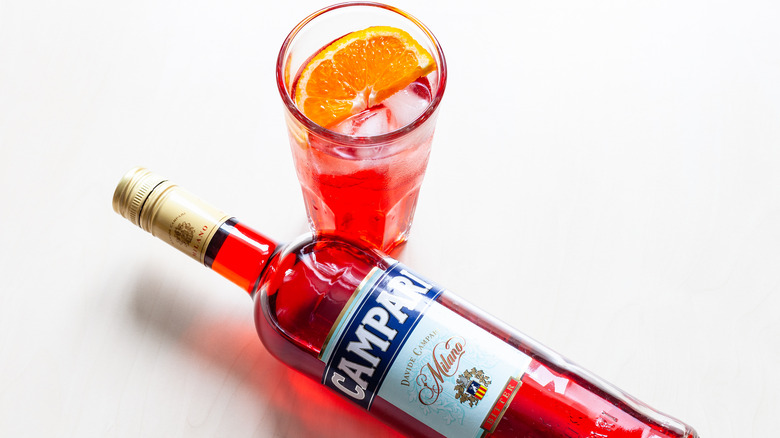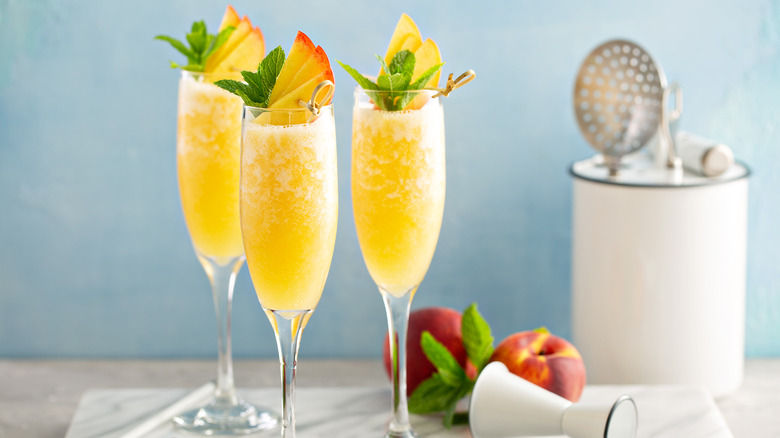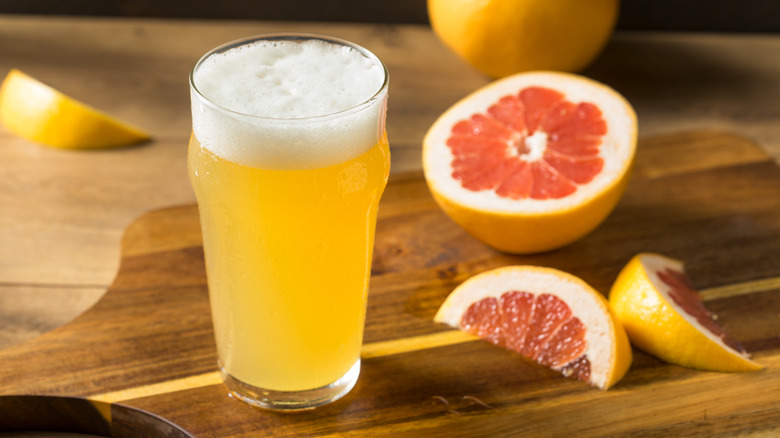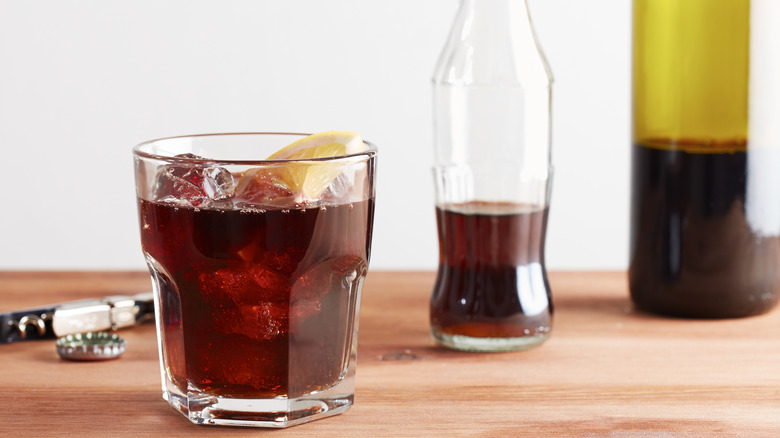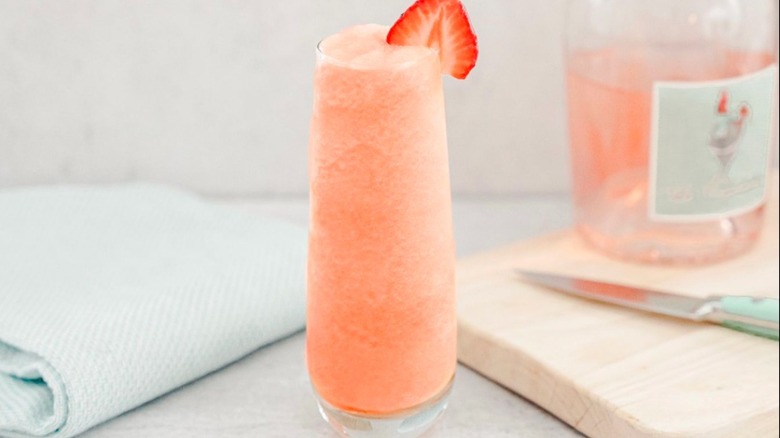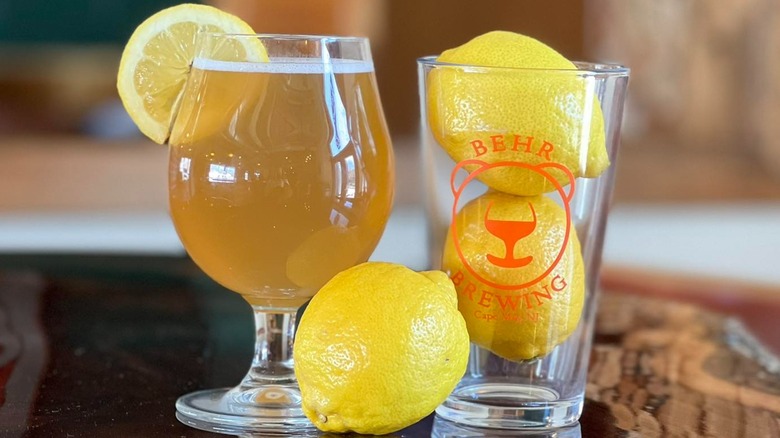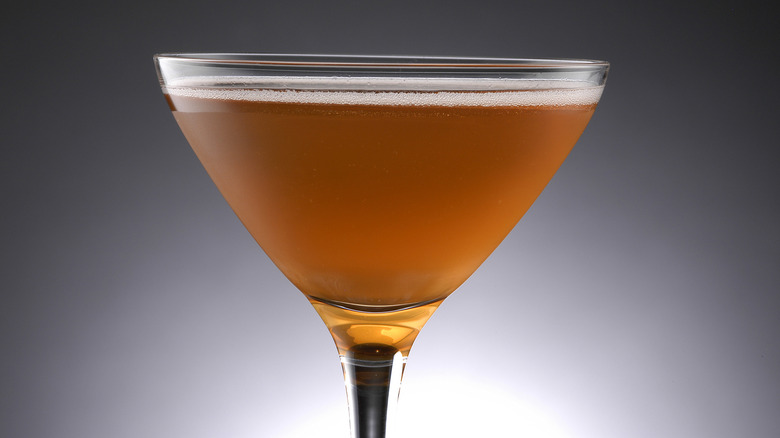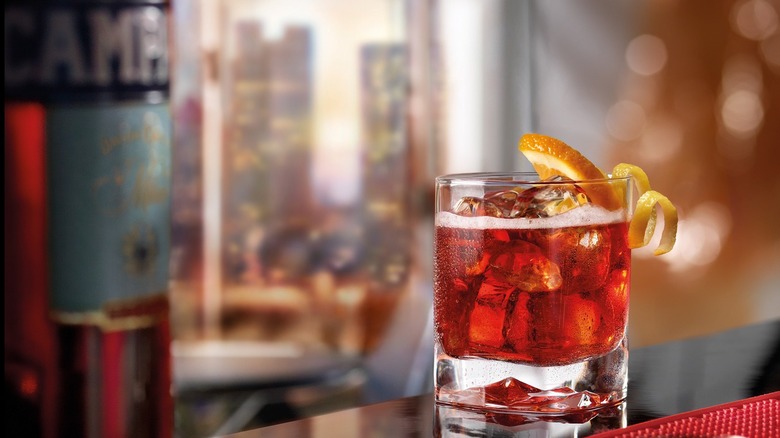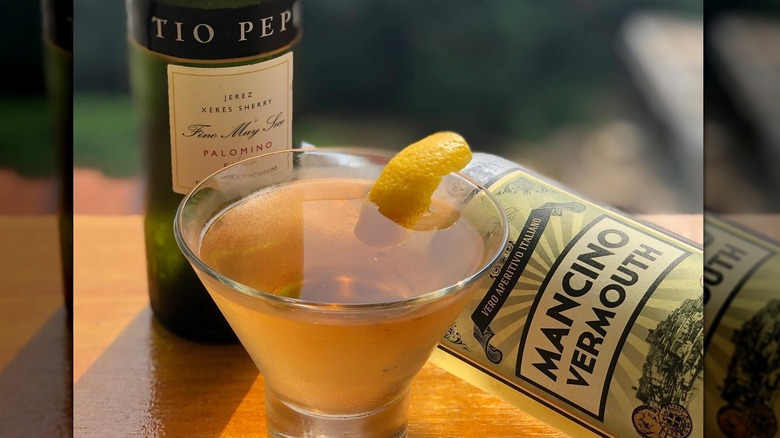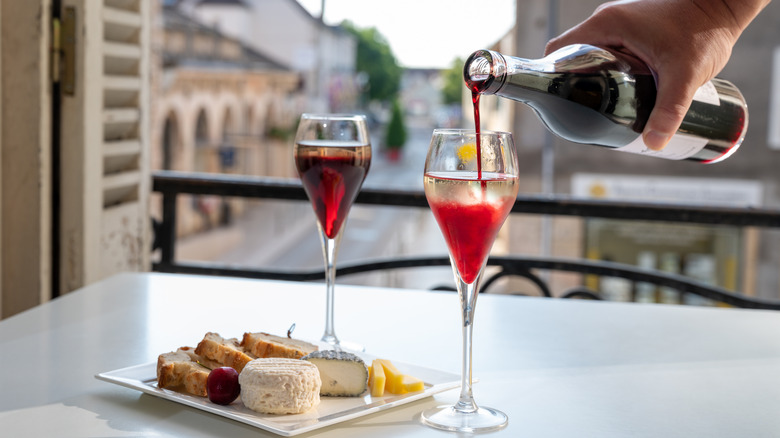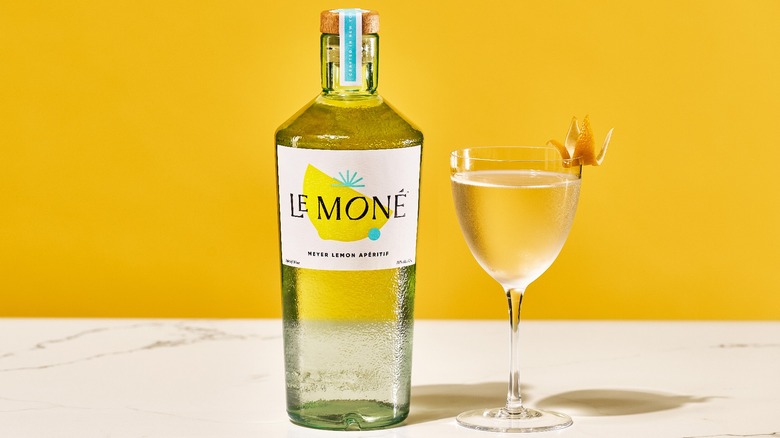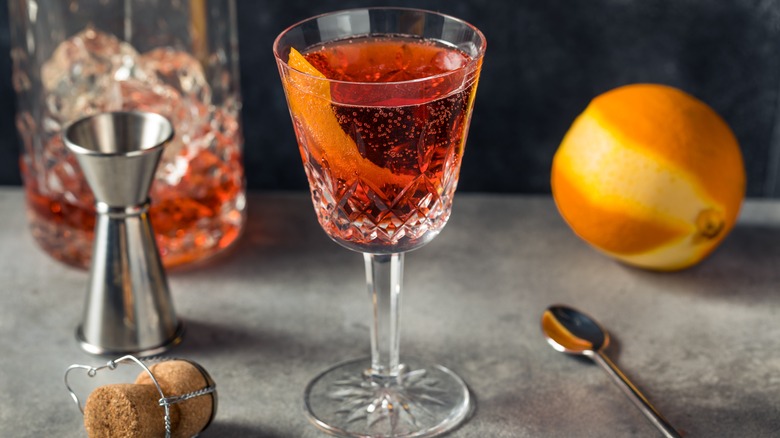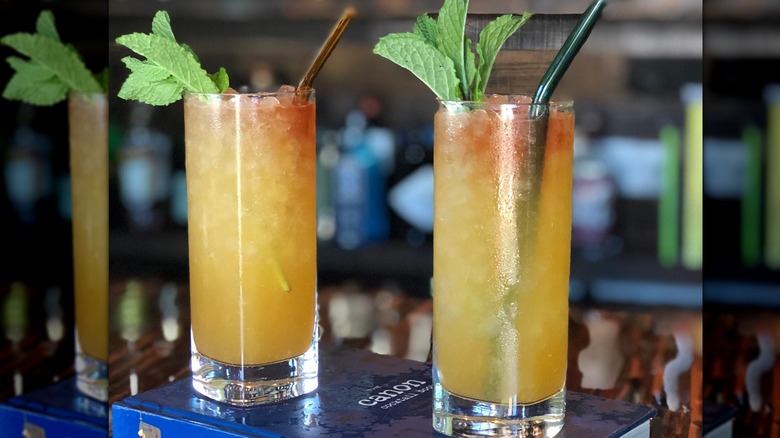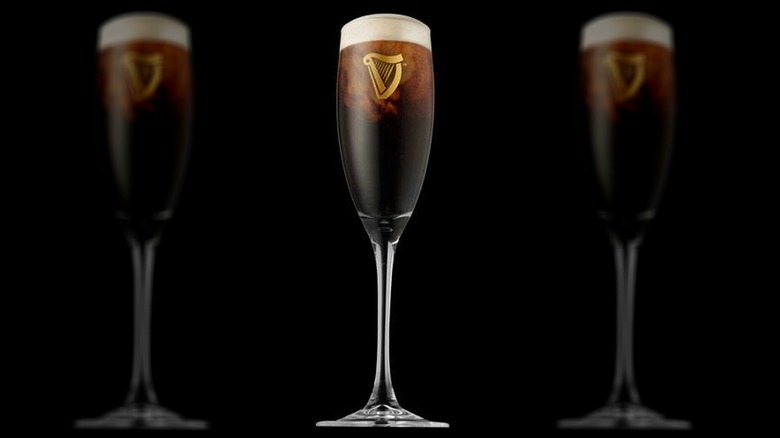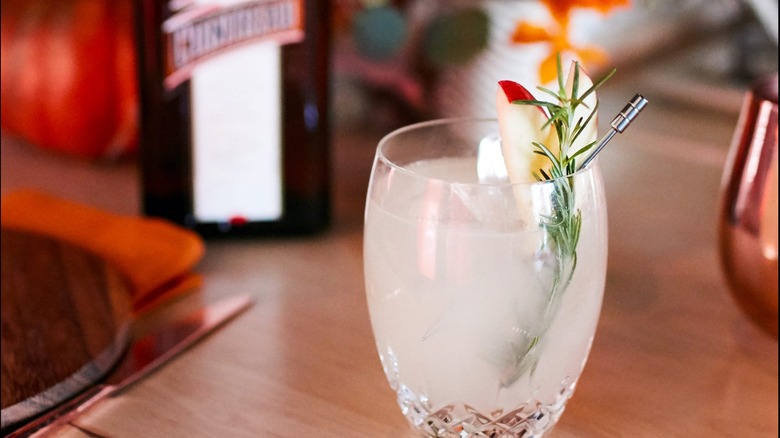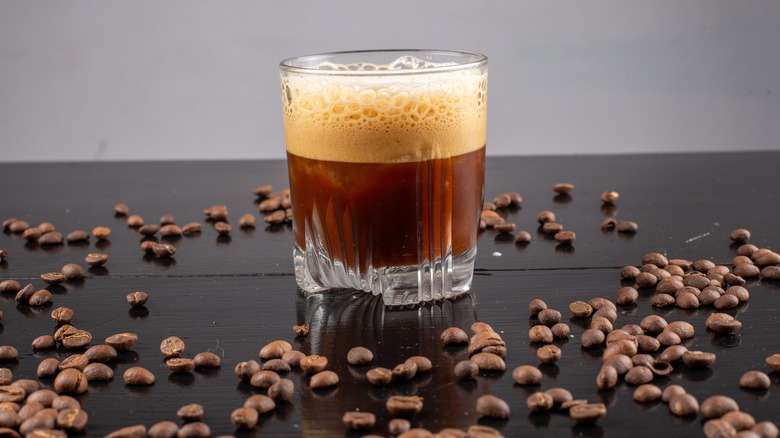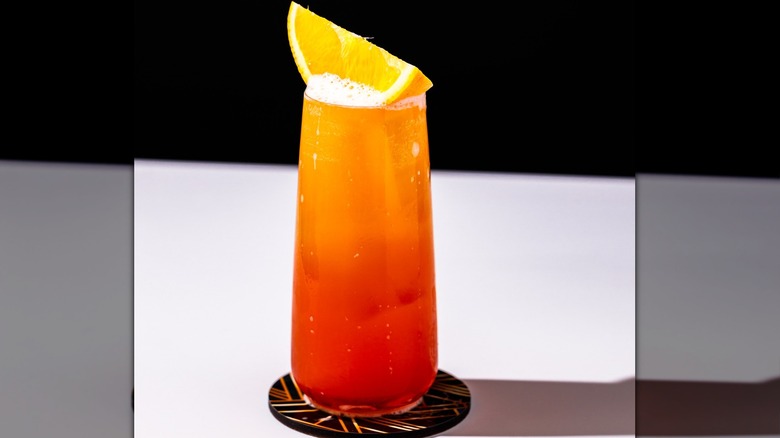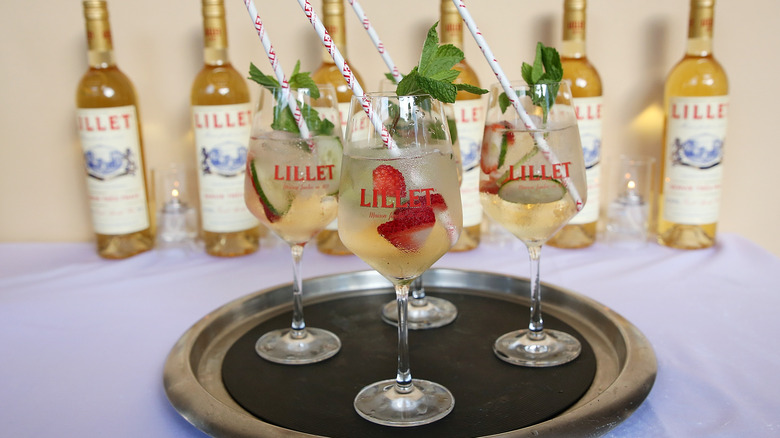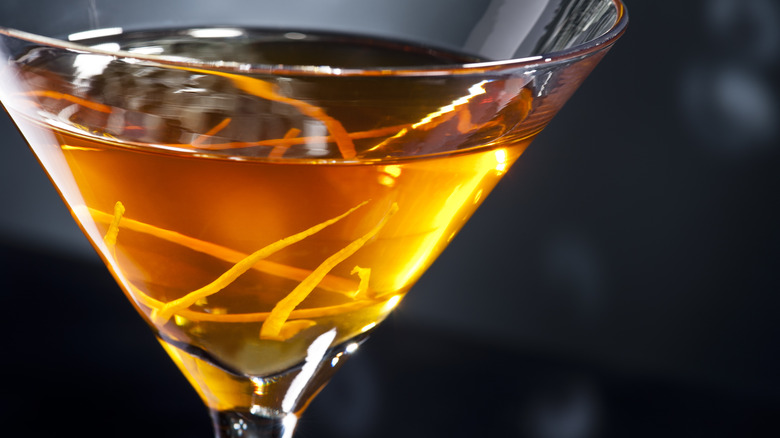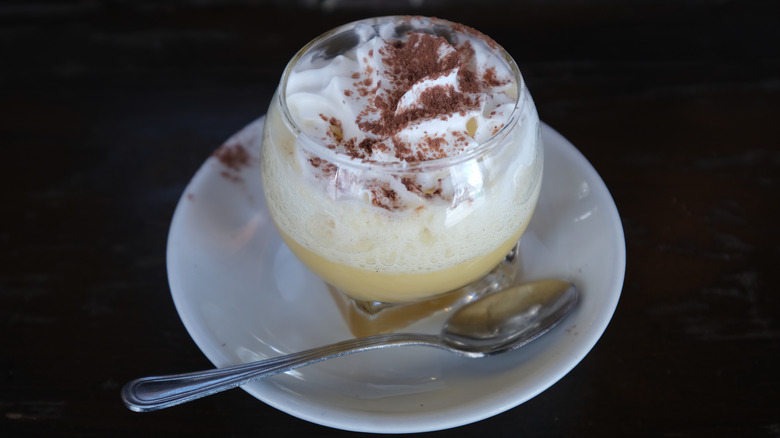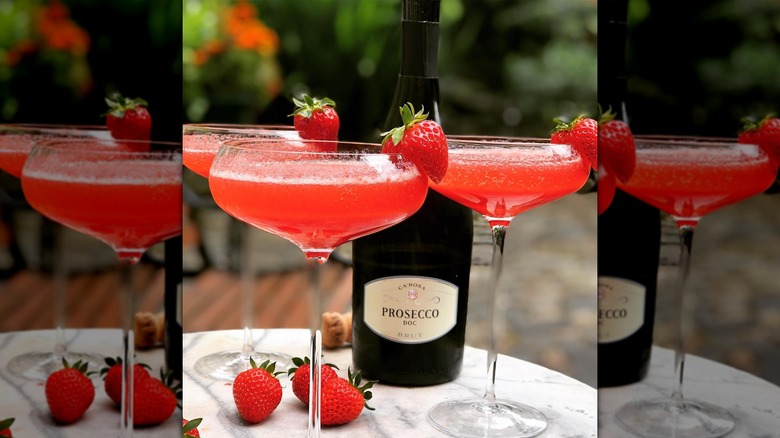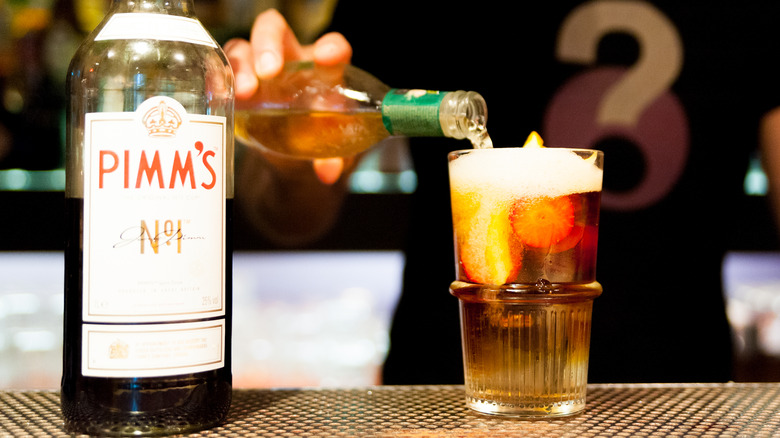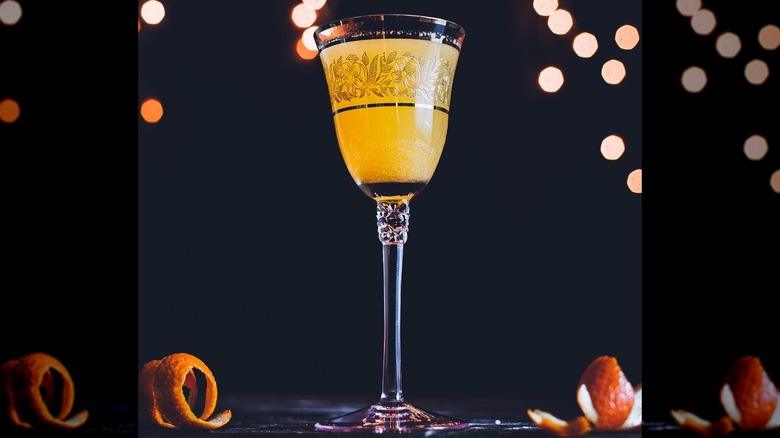36 Absolute Best Low-Alcohol Cocktails
Imbibing in low-alcohol cocktails is an option increasingly gaining traction among drinking enthusiasts. International Wine and Spirits Research (IWSR) reports that the no/low-alcohol category globally exceeded $11 billion in 2022. The research company further expects consumption to grow an additional third by 2026 across ten significant markets, including the U.S., the U.K., Germany, France, South Africa, and Japan. IWSR adds that In the U.S., 43% of no and low-alcohol consumers are millennials.
But what is low alcohol? There is no specific standard for cocktails, but reducing a classic drink's alcohol content can occur by swapping high-alcohol hard liquor with low-alcohol ingredients, like flavor-packed fortified and aromatized wines. Bartenders have also been known to create something distinctive and delicious using only low-alcohol ingredients.
Below are 36 of the best low-alcohol cocktails. These full-flavored drinks are so well balanced and tasty that it's barely noticeable that they have a lower alcohol content.
Rebujito
Sherry is ideal for low-alcohol cocktails because of its options and styles. It ranges from bone-dry to syrupy sweet, with alcohol ranging from 16%-22% alcohol by volume (ABV), around half the amount of hard liquor.
One of the most refreshing sherry cocktails begins with dry fino or manzanilla sherry produced under a layer of yeast known as flor. The flor gives the fino a bready nuttiness, with citrus and saline notes.
The rebujito cocktail mixes fino over ice with either seltzer or lemon-lime soda. The former is fresh and savory, the latter adds sweetness.
White port and tonic
Portugal is known for its hearty, fortified, tawny and ruby port from red grape varieties. However, Douro Valley winemakers also craft a fortified white port from native white wine grapes like malvasia fina and códega, creating a fruit-forward blend with herbaceous, stone fruit notes.
With flavors similar to a fruity gin but with half the alcohol, white port is delicious in cocktails, particularly white port tonic. Also known as a Portonic or Porto Tonico, the drink combines two ounces of white port with tonic water, served over ice in a rocks glass.
Hugo spritz
Aperol or Campari have become the go-to liqueurs for spritz drinkers. However, a good spritz cocktail is not limited to bitter liqueurs.
Fragrant, floral elderflower liqueur allows the citrus and floral notes in the sparkling wine to shine. Invented in Northeast Italy's South Tyrol region, filled with elder trees, this aromatic cocktail mixes sparkling wine with a splash of St. Germain, topping with seltzer water. Garnish with fresh mint, enhancing the herbal aromas.
Sherry cobbler
When you hear the word "cobbler," you either think shoes or the baked fruit-filled dessert. Wine-based cobbler cocktails involve neither, but became popular in America during the late 1830s as the country developed an affinity for wine and sherry, considered an affordable luxury since Spanish wine is relatively inexpensive.
The original cocktail was a mix of sherry, sugar, and ice. Today's version employs nutty amontillado sherry or dried fruit-filled oloroso, enhanced by muddling oranges and sugar before adding sherry and ice. Stir and strain into an ice-filled highball glass and you've got a sherry cobbler cocktail.
Champagne cocktail
Everybody loves a Champagne cocktail. It's fizzy, refreshing, and one of the best cocktails for drinking Champagne. The first mention of the cocktail was when Jerry Thomas' s1862 Bartender's Guide published the recipe.
The classic recipe begins with a sugar cube soaked in aromatic bitters, then dropped into a glass of brut-style Champagne and served with a lemon twist. As the cube dissolves, it mellows the acidity of the dry sparkling wine, with the bitters balancing the sugar, delivering sweetness with sharpness.
Michelada
The michelada combines Mexican beer with hot sauce, tomato juice, ice, and lime. Distinct from the chelada (Mexico's other favorite beer cocktail that pours a light beer over a Tajín or salt-rimmed, ice-filled mug with lime), the michelada has become increasingly popular in America in recent years.
A great recipe typically calls for a bloody Mary mix, with imaginative bartenders creating super garnished micheladas that provide your daily calorie count. However, Clamato juice, hot sauce, and Mexican beer are the most traditional.
Aperol spritz
A bitter amaro with sparkling wine and a splash (or spritz) of water has been sipped on the streets of Venice since the late 1800s. In 1919 two brothers in Padova, Italy, introduced Aperol, a bitter amaro with rhubarb and cinchona bark. Inspired by the French word for aperitif, apéro, Aperol is slightly sweet with a sharp, herbaceous flavor.
The recipe includes a 3:2:1 prosecco, Aperol, and seltzer water mix. Serve in an ice-filled goblet, garnishing with a briny olive. Adding the salty ingredient tames the bitterness, enhancing the fruity sweetness.
Pisco sour
The pisco sour is made from pisco, an unaged brandy made from native white grapes in Peru and Chile, with both countries claiming it as their own. Peruvians can claim the cocktail, as a Lima bar first shook the drink in 1916.
The classic pisco cocktail recipe includes pisco with citrus juice, bitters, and egg white, shaken until frothy and served up in a coupe. Pisco's alcohol can range from 30% to 48%. Check the bottle's ABV to keep the cocktail light.
Mimosa
Fresh orange juice and brut-style Champagne came together for the first time at the Hotel Ritz in Paris in the 1920s. It is named for a yellow flowering plant.
The cocktail works well due to its balance with the sweetness of the juice, enhancing the dry sparkling wine. It is commonly served with equal parts chilled orange juice and sparkling wine in a flute glass for brunch. Interestingly, the original recipe served the cocktail over ice in a large goblet.
White wine spritzer
A classic white wine spritzer is much more than a sugary wine cooler. Instead, combining dry white wine with seltzer and citrus slices over ice yields a crisp, refreshing low alcoholic drink.
Additionally, it is incredibly low in calories. Mix three ounces of wine with three or four ounces of soda, creating a drink with around 60 calories. If you're feeling adventurous, upgrade your wine spritzer by adding fresh fruit and herbs.
Amaretto sour
In the 1970s, when sweet drinks like the tequila sunrise and white Russian were popular, amaretto producer Disaronno combined two parts almond liqueur with one part lemon juice to create the amaretto sour.
Meaning "little bitter" In Italian, amaretto has a distinctive, nutty sweetness that creates a balanced drink when paired with acid from the citrus. Though the cocktail is low alcohol, it is not low calorie, as each has some 230 calories.
Siciliano
A Siciliano is the ideal cocktail to enjoy after a hearty meal. It lends double digestion assistance by combining herbaceous amaro with coffee.
One recommended version is Sicily's Averna Amaro, which keeps the drink local to its name. Averna's blend includes rosemary, orange, and licorice. Healthline reports licorice root is a digestion aid; coffee is as well (via Healthline). The cocktail is enhanced with sweet vermouth to round out the flavor profile, finishing with a fragrant orange twist.
Campari and soda
One of the most straightforward aperitifs combines bitter orange Campari with soda or seltzer to create one of the best Campari cocktails. It is similar to enjoying a whiskey with a splash of water.
Water or soda enhances a spirit's natural flavors. It will intensify the amaro's botanical scents as you sip. Enjoying the aperitif with soda also helps cut its sharp intensity, as the bitter herb, botanical-filled Campari can be an acquired taste.
Bellini
In 1945, Harry's Bar in Venice created a fresh peach Bellini cocktail. The cocktail was named after the Italian artist Giovanni Bellini, since the painter's canvases often showed pinkish hues. The original recipe combines white peach purée with sparkling prosecco, though adding a splash of lemon juice will cut through the stone fruit's sweetness.
White peaches are best for the cocktail, as they are the sweetest. However, it is delicious with yellow peaches as well.
Radler
The radler's creation came out of necessity. A German innkeeper in the 1920s found he didn't have enough beer to quench the thirst of cyclists who had arrived parched at his establishment. He added sparkling lemonade to the beer to stretch his supply, creating what we know now as the radler. Radeln even means "cycle" in German.
Today, the radler uses any sparkling citrus soda. Try some refreshing grapefruit soda poured half-and-half with light, pilsner-style beer.
Kalimotxo
The first combination of red wine and cola occurred in Spain's Basque Country in the 1920s; decades later, at a festival in the 1970s kalimotxo was introduced.
Coca-Cola's first factory arrived in the country in the 1950s, expanding the drink's availability. At a 1972 Basque festival, organizers saved a batch of red wine that had gone bad by sweetening it with the American soft drink. Festival attendees loved it, and the cocktail became the kalimotxo.
Make this drink at home by mixing equal parts inexpensive red wine and cola over ice. It's a great wine cocktail for summer.
Frosé
The only thing better than a glass of rosé on a hot day is a frozen rosé, or frosé. The best frosé starts by freezing your favorite rosé for at least six hours, creating a slushy rosé granita. Blend the granita with a splash of lemon juice and frozen strawberries.
If you are short on time, pour a cup of rosé into a blender with two cups of ice. Blend until frozen and frothy.
Shandy
The shandygaff, or shandy, is an English pub favorite from the 1800s. Initially made by mixing equal parts beer with ginger ale, today's recipes use lemonade or lemon soda. The difference between a shandy and a radler is that a shandy always includes a lemony drink.
Served in chilled pint glasses, a shandy is one of the best drinks to mix with lemonade. It's a low-alcohol refreshment with just enough sweetness to cut the beer's bitterness.
Adonis
An 1884 musical inspired the Adonis, created at New York City's Waldorf-Astoria Hotel. It was a simple cocktail to toast the longest-running show on Broadway at the time (over 600 performances).
The cocktail is highly flavorful, combining one part fino sherry (like Tio Pepe) with two parts sweet vermouth, (like La Copa), keeping the drink very Spanish. Modern takes include a higher percentage of sherry to vermouth, adding a dash of orange bitters.
Americano
Gaspare Campari's bar in Milan first served the Americano cocktail in the 1860s. The Italian cocktail became known as the Americano because American tourists found its flavor refreshing.
This cocktail combines bitter Campari with sweet vermouth and sparkling water. The combination works so well because the herbaceous, botanical vermouth compliments the citrus and herbal notes of Campari. At the same time, the sweetness of the aromatized wine will cut through the sharpness of the bitter amaro.
Bamboo
A German bartender created the Bamboo cocktail at the Grand Hotel in Yokohama, Japan, in the 1890s. The American military had partial ownership of the hotel, and they were looking for the flavors of home.
The cocktail includes equal parts dry fino or manzanilla sherry with dry vermouth and a dash of bitters. Unlike the sweeter Adonis, the cocktail is herbaceous, nutty, and dry, delivering a savory umami note. Stir over ice until cold and strain into a coupe.
Kir Royal
Kir Royale honors Canon Felix Kir, WWII hero and Mayor of Dijon, France — where the cocktail originated. The Kir Royale is the Champagne version of the Kir aperitif, the original cocktail containing crème de cassis and the high acid, non-sparkling Bourgogne aligoté wine. Using a sparkling wine other than Champagne creates a Kir Imperial.
It is best to use the driest sparkling style with racy acidity, like an extra brut. It will cut through the richness of the cassis.
Le Moné lemon drop
The lemon drop martini mixes vodka, triple sec, fresh lemon juice, and simple syrup. The drink's alcohol is around 40% ABV, and the calorie count is about 200 per drink.
Le Moné is an all-natural 16% ABV aperitif wine that begins with Meyer lemon peels, then adds bergamot, Persian lime, and agave to create an authentic, fresh, lemony spirit that isn't cloying or syrupy. Shake three ounces of Le Mone with a squeeze of lemon and a dash of agave over ice until very cold. Strain into a martini glass and enjoy this cocktail with under 100 calories.
Negroni Sbagliato
The negroni cocktail dates back over 100 years, to when Count Negroni ordered an Americano cocktail with herbaceous gin instead of sparkling water. The result was a much boozier, aromatic cocktail with a punch. The negroni sbagliato returns to the Americano style, mixing equal parts Campari with sweet vermouth and then topping with prosecco.
While this cocktail does have more alcohol than the Americano, it still registers less than a classic negroni cocktail.
Roman holiday
The Roman Holiday cocktail is a variation of the boozy Jungle Bird, a tiki-style cocktail with rum or vodka. The Roman Holiday excludes hard liquor, combining Campari with pineapple juice and demerara syrup, adding a shot of cold brew coffee and Amaro Meletti, a bittersweet liqueur with floral and caramel flavors.
The cocktail offers the perfect combination of sweet and bitter, with a caffeine boost, making it an ideal brunch cocktail alongside something like an easy spinach frittata.
Black velvet
The combination of Champagne and stout beer is believed to have come about with the death of Prince Philip of England, the husband to Queen Victoria. After his death, the mourning queen wore black for the rest of her life.
The black-hued Black Velvet cocktail honors the queen, mixing hearty stout and crisp Champagne. Pour equal parts of both very slowly into a chilled flute glass, as they tend to bubble over if poured too quickly.
Orange rickey
The combination of alcohol with seltzer and lime, creating a rickey cocktail, is believed to have first occurred in Washington, D.C. in the late 1800s. The name comes from lobbyist Jim Rickey, who preferred sugar-free cocktails. In 2011, it became the city's native cocktail.
A rickey can include any alcohol, but might be best with juicy, citrusy orange liqueur. Pour two ounces of triple sec and a squeeze of lime into an ice-filled highball glass. Top with seltzer and garnish with herbs, berries, or citrus wheels.
Caffe Coretto
Corrected coffee, or caffè coretto, became a widespread Italian drink during Mussolini's fascist regime when tariffs on coffee and espresso were high. Italians made coffee alternatives with chicory and orzo, creating bitter beverages with bite.
Adding alcohol (like brandy, aquavit, or grappa, depending on what part of Italy you were in) cut the drink's bitterness and made them tolerable. Though the cocktail isn't as common today, it remains a delicious, low-alcohol option after dinner.
Garibaldi
Giuseppe Garibaldi was the inspiration for the Garibaldi cocktail. He was an Italian leader whose work contributed to the country's unification in the mid-19th Century.
His namesake cocktail contains just two ingredients, Campari from Northern Italy and oranges from Sicily in the south, symbolizing the uniting of the country. The cocktail combines one part Campari with two parts orange juice in a rocks glass over ice. Garnish with oranges, particularly if you can find a red Sicilian one.
Monte and Tonic
Amaro Montenegro's name is a tribute to the second queen of Italy, Princess Elena of Montenegro, upon her marriage to Prince Vittorio Emanuele III. The bitter Italian liqueur combines 40 herbs and botanicals including licorice, bitter orange, coriander, and cinnamon, creating a multi-dimensional liqueur.
Montenegro is similar to gin, but with less alcohol. Like gin, its flavor profile perfectly matches tonic. Its citrus, sweet spice, and anise flavors cut through the mixer's sharp quinine taste.
Lillet Spritz
Lillet is a French fortified, aromatized wine infused with herbs and botanicals, creating a floral, fresh, fragrant aperitif. Each option is available in a blanc, rosé, and rouge style, delivering juicy fruit flavors with layers of wildflower, woody herbs, and spices.
Lillet is one of the essential parts of James Bond's favorite Vesper martini. The Lillet spritz combines Lillet Blanc or Lillet Rosé with seltzer in an ice-filled wine glass for a slightly less boozy option.
Addington
The Addington is classically made by combining sweet Italian vermouth with dry French vermouth in equal parts, then topping with a splash of seltzer. The cocktail first appeared in the 1930 bartending guide "The Savoy Cocktail Book."
The Addington showcases how delightful a low-alcohol cocktail with quality ingredients can taste. In other words, to make this cocktail sing, use premium vermouth like sweet Carpano Antica Formula with Dolin dry. To elevate it further, add a spritz of effervescent Topo Chico.
Calimero
A calimero is essentially coffee-laced egg nog. It is a version of a barmbadino, classically made with brandy, egg sabayon, and cream, with the calimero adding espresso. It is a popular après-ski cocktail enjoyed throughout the Italian Alps after a day on the slopes.
Though you can make sabayon (or zabaglione in Italian), egg liqueurs like Advocaat and Zoov are readily available. Layer the liqueur, then espresso, and top it off with whipped cream. Serve warm or chilled.
Rossini
The Rossini honors the famous Italian composer Gioachino Rossini. He was one of Italy's most influential, significant artists whose operatic works include "The Barber of Seville" and "Guillaume Tell."
Like other juice-based sparkling wine cocktails, the drink combines fresh strawberry purée with prosecco. A splash of lemon juice will balance the sweetness. It works best with rosé sparkling wine, as the fresh berry fruit's sweetness enhances the wine's wild berry and cherry flavors.
Pimm's Cup
Pimm's Cup is an iconic cocktail of the Wimbledon tennis tournament. The cocktail has quenched the thirst of fans on the London lawn at the All England Lawn Tennis and Croquet Club since 1971.
The drink, however, was invented in New Orleans in the 1940s. A French Quarter bar owner mixed low-alcohol botanical Pimm's No. 1 with lemonade and 7-Up, garnishing with berries, cucumbers, and mint. Try mixing a Pimm's Cup cocktail with ginger ale instead of lemon-lime soda, giving the drink a spicy kick.
Puccini
Named for Giacomo Puccini, the Italian composer of "La Bohème" and "Madame Butterfly," the Puccini cocktail resembles other fruit-forward Champagne cocktails. The Puccini includes fresh mandarin juice gently mixed with prosecco, creating an elegant cocktail with sweet vanilla and spiced citrus.
Mandarin juice can be challenging to procure, so swapping tangerine or clementine juice is also delicious. Adding a dash of mandarin liqueur will enhance the cocktail's already sweet flavors.
Static Media owns Tasting Table and Mashed.
